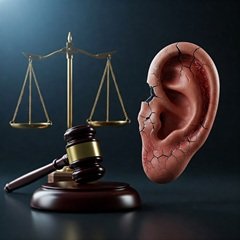How to avoid dramatic increases in hearing loss claim settlements


A recent £713,716 Noise Induced Hearing Loss (NIHL) settlement presages the revised legal and medical landscapes surrounding hearing damage claims.
This case is the canary in the Noise Induced Hearing Loss (NIHL) costs mine, a canary that will soon be visiting any organisation that hasn't implemented the newly revised risk reduction best practices. A combination of an HSE inspection noise focus, new research on the underestimated NIHL damage to health plus legal framework changes is a perfect storm that will dramatically increasing the costs of not taking urgent action to cut NIHL.
The issues
- HSE noise inspection focus: 300% increase in enforcement actions, false assumptions re PPE
- New medical research: NIHL increases dementia risk by 500% (the largest modifiable risk factor)
- Quality of life: higher unemployment, 200% increased risk of accidents, early retirement etc...
- Revised legal framework: no lower limit on noise exposure, increased impact on health as above
How to mitigate - the newly revised best practices guide
As current typical hearing damage risk programmes have not worked well enough, urgent actions are necessary to reduce the risks and thereby the potential dramatic rise in future costs, including insurance premiums. The objective is Nil NIHL.
Fortunately, the following are the 5 areas where implementing the recent updates to best practices can reduce NIHL risk by up to c 90% with little or no effect on current expenditure.
- PPE performance: the attenuation is much less than you think. You need to understand why to improve protection
- Assessment and report quality: develop/acquire a high quality template for use in-house or by consultants
- Noise Control Audit (NCA): invest in a cost/benefit analysis of your noise control options
- Health surveillance: push for providers to switch from placebo audiometry to otoacoustic emission testing
- Return On Investment (ROI): calculate how effectively your resources are being spent and how it can be improved
Our 1 day online Noise Competency Update Workshop provides a quick, simple way to find out how to implement these revised best practices and to discuss your options with an expert.
